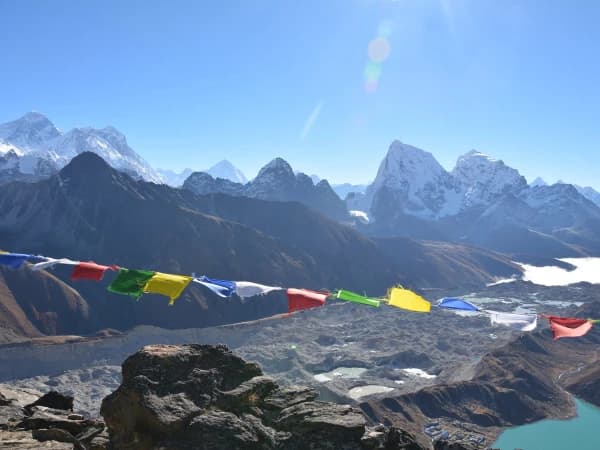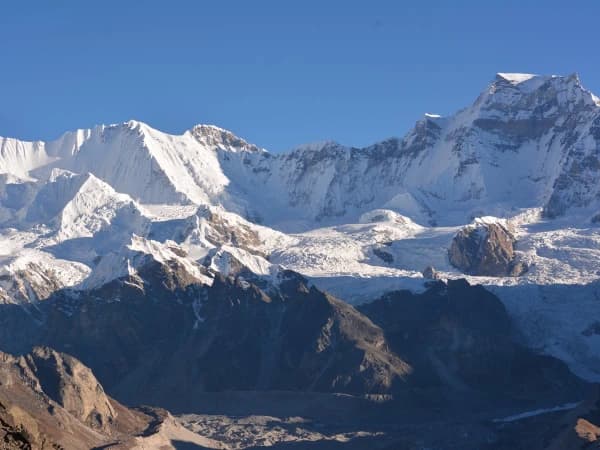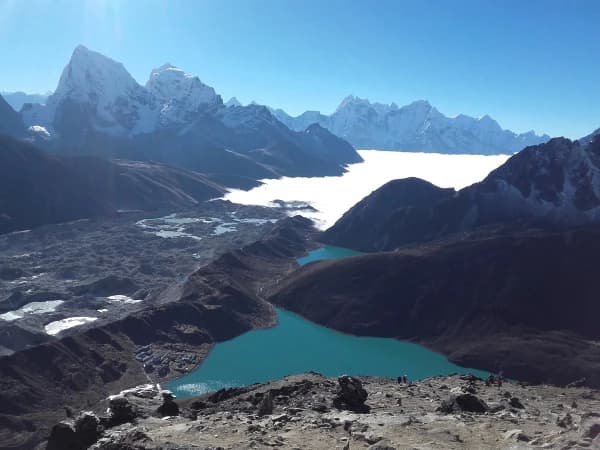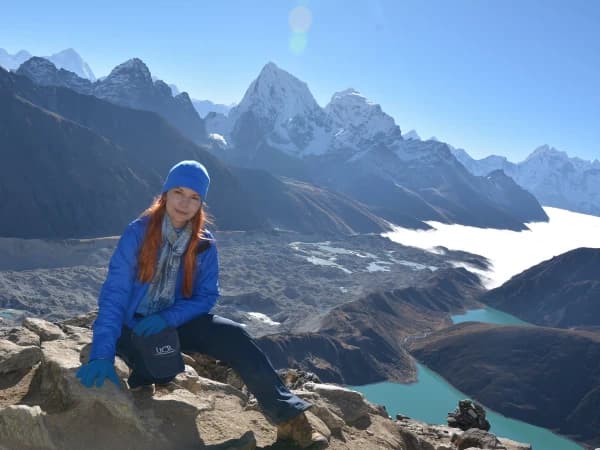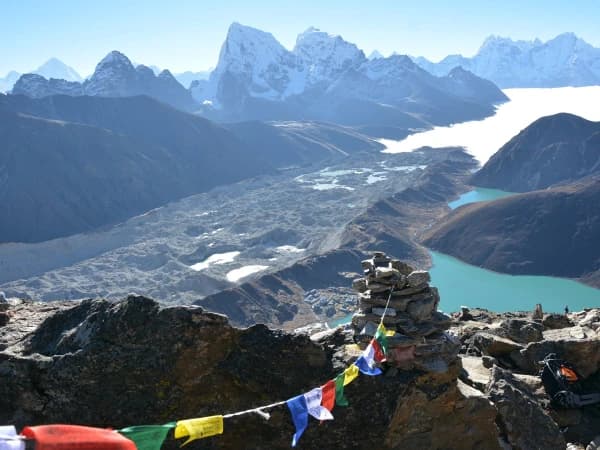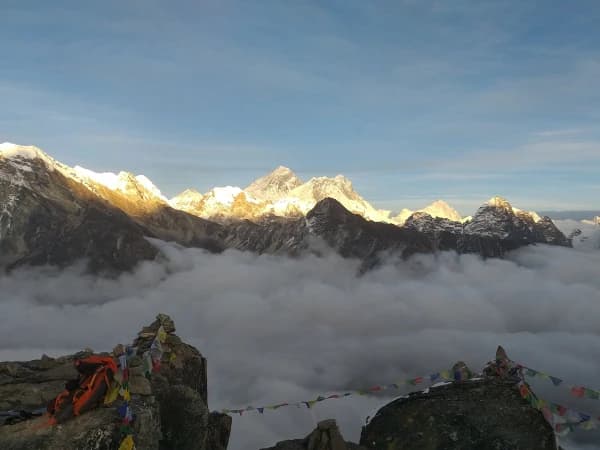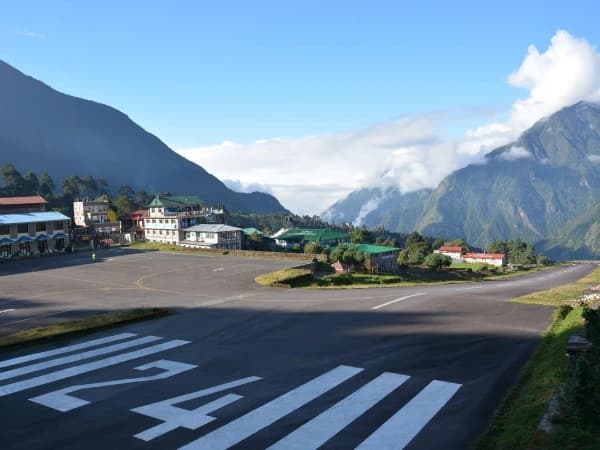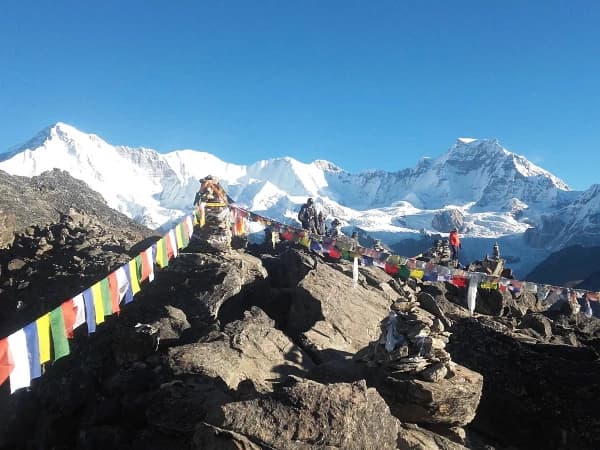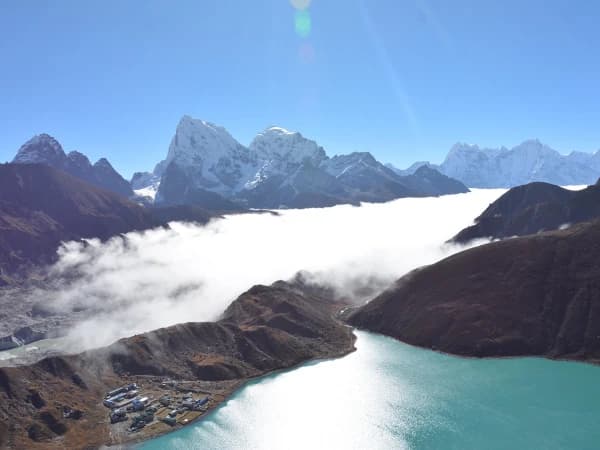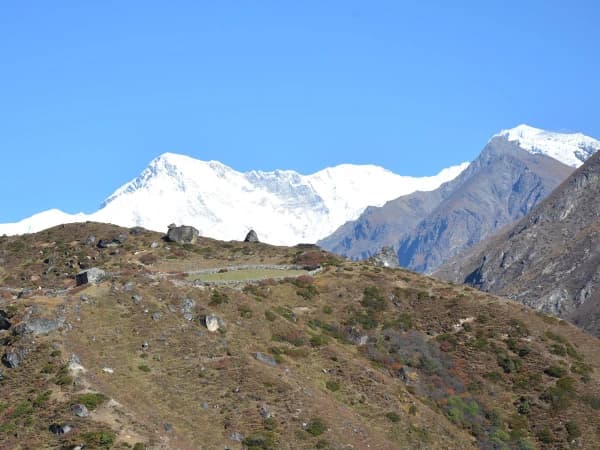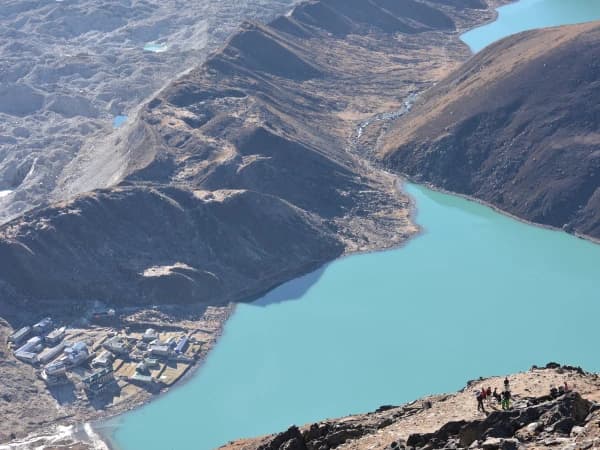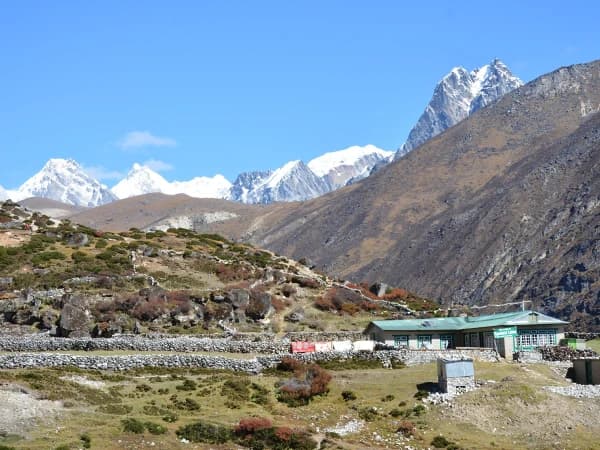Equipment and accessories are essential to fully prepare for any kind of adventure and ensure an easy, hassle-free journey. A systematic way one can follow while packing is by checking items necessary from head to toe. This minimizes the risk of overlooking essential items. The iconic Himalaya Adventure team has developed a detailed packing list that will be advantageous for all trekkers venturing into the Himalayas, ensuring a successful hiking experience. Our recommendations are derived from our extensive experience. Below are the essentials required for any basic trek in Nepal.
Equipment and Accessories packing list
Bag pack
Trekking bag: For the trek, bringing a backpack with comfortable features and adjustable straps is crucial. For a week-long trek, a capacity of 40 to 60 liters is typically adequate. Ensure the backpack includes effective hip belts, shoulder support, ample pockets, and a design that allows for quick accessibility of your items and ventilated back panels to enhance comfort during daily use.
Additionally, selecting an appropriately sized and fitted backpack enables you to carry all necessary items while maintaining comfort and mobility. Minor adjustments can significantly improve usability. It is essential that your backpack moves with you and doesn’t hinder your motion.
Daypack: All trekkers are advised to also consider carrying a daypack. It is important to note that you will not be required to carry your backpack every day; therefore, for day excursions, shorter hikes, and sightseeing activities, a daypack will prove to be an invaluable asset. A small backpack can be handy for carrying daily essentials like water bottles, sunscreen, hat/scarf, or even a notebook and pen if needed.
Footwear
Trekking Shoes:Whether you’re trekking in the hills of the Kathmandu Valley or climbing into the high Himalayas, trekking boots will be your most important piece of equipment. We recommend choosing waterproof boots that provide high ankle support, are lightweight, warm, and comfortable. Mid-cut or high-cut shoes are particularly suitable for adventure activities, including extended treks, as well as casual day hikes. And it’s a good idea to break them in before you start your trek in the Himalayas. While boots with a high, padded collar are best for supporting your ankles, some trekkers prefer trekking shoes that are lighter and may be even more comfortable. You may want to carry those that suit your preference and need the best.
Hiking Sandals/Sneakers: These footwear options can be utilized during the non-trekking hours of the morning and evening or while at hotels and camps. They serve as a comfortable alternative, allowing the feet to rest from heavier boots. Additionally, hiking sandals or sneakers can be useful on less steep trails, giving your feet a much-needed change. They can also be used for safely crossing streams and rivers as they provide greater comfort and safety compared to being barefoot or getting your boots wet.
Clothing
Jacket: A warm jacket is essential for cold weather. Choose a jacket that is waterproof and windproof, and provides good insulation.
Fleece or hoodie: Fleece jackets or hoodies serve as excellent mid-layer options for maintaining warmth. It is recommended to bring at least two, as they can also function as additional layers during nighttime or for hygiene purposes.
Trekking pants: Consider acquiring long pants made from a nylon blend that are waterproof, windproof, lightweight, and quick-drying. Warm alternatives such as fleece-lined tracksuit pants or specialized hiking pants can also be considered.
T-shirts: We recommend opting for quick-drying T-shirts constructed from breathable and moisture-wicking materials. This choice will aid in keeping you cool and dry during your trekking activities. They also help prevent you from catching a cold easily in the higher altitudes.
Long-Sleeve shirts: A long-sleeve shirt can serve as an effective base layer on colder days or while traversing high passes.
Thermals (upper and lower): While you’ll be staying at warm and comfortable guesthouses during your trek in Nepal, there’s no denying that nights in the mountains are cold. At Iconic Himalaya Adventure, we recommend bringing at least one thermal top-and-bottom outfit on your trek. These are also known as base layers or long johns. A good pair of thermals will trap your body heat and keep you warm. We recommend going with wool fabric for your base layer.
Gloves: Your hands will be exposed to cold mountain winds when you hike in the Himalayas, particularly if you’re using trekking poles. This is especially true of those treks in Nepal which rise into real mountain territory above 4,000 or 5,000 meters in elevation. A pair of gloves will keep your hands warm in the upper himalayas, especially when it’s snowing but they aren’t necessary for every trek in Nepal. Consider specialized mountaineering gloves if you expect to be doing any climbing or scrambling.
Buff/neck gaiter: Wearing a buff, neck gaiter, or scarf around your face and neck will protect you from the worst of the cold mountain winds—not to mention the dusty road conditions that you’ll find at lower elevations here in Nepal. You probably won’t need this for the entirety of your trek, but it’s a great piece of gear to wear around your neck and pull up whenever you need it. These useful products are made of both synthetic fabric and wool, and they can be purchased at most outdoor retailers.
Beanie Cap: A beanie is a valuable item for colder and windy days; it is recommended to carry at least one. It can also be used at night when temperatures drop significantly.
Hiking Hat: While sunglasses will protect your eyes when you’re trekking in Nepal, you’re going to want something to keep the sun from the rest of your face. A good sun hat is an important part of every trekker’s kit, particularly as you hike for extended hours. While any wide-brimmed hat is a good choice, you might consider a hat with a high UPF rating. These hats are made of ultraviolet protection fabric, and they’re a good choice for travelers whose skin burns easily.
Socks: During your trek in Nepal, you’ll rely on hiking socks and liners to keep your feet warm and to protect them from blisters. While you’ll find synthetic hiking socks on the market, we recommend choosing socks made of wool: it’s more comfortable, regulates temperature more efficiently, and doesn’t tend to get too smelly. When choosing your hiking socks and liners, you should also think about the shoes you’ll be wearing: you’ll want to make sure that your socks rise above the ankle of your shoes or boots to avoid chafing. We recommend you to carry atleast one pair of socks for each day of the trek.
Rain cover/poncho: A rain cover or poncho is essential for keeping both you and your gear dry in the event of unexpected rainfall or snowfall.
Knee Caps: If you have trouble with your knees in the cold or when climbing stairs, knee caps are your friends. They help not only by keeping your knees warm but also by supporting them during long hours of walking
Sleeping bag & liner
Comfortable accommodations at family-owned guesthouses, are present in most treks in Nepal where you’ll be treated to a clean bed and some blankets to keep you warm. But the nights of the high Himalaya can be very cold, and you’ll want to bring your own sleeping bag that’s rated to -20 degrees Celsius to withstand the worst weather. If you can’t bring your own, Iconic Himalaya Adventure will provide a sleeping bag for the duration of the trip.
Gadgets & Accessories
Sunglasses (UV protected): During your trek in Nepal, you’ll climb into high-altitude environments where the sun shines brightly—even in winter. This strong sunlight can also be reflected from the Himalayan snow, and it’s important to wear sunglasses to protect your eyes. Sunglasses with side shields are especially useful, as they’ll also protect your peripheral vision from these damaging ultraviolet rays. While you can purchase sunglasses at a variety of retailers, we recommend looking for products rated for skiing or mountaineering in order to ensure the best possible quality.
Trekking pole (if needed): While some travelers prefer to hike without the benefit of trekking poles, there’s no denying that a sturdy set of these professional walking sticks will grant you some extra stability as you traverse the steep and sometimes slippery trails of the Himalayas. While it’s possible to purchase your own trekking poles in Kathmandu, Pokhara, or elsewhere in Nepal, many of our returning clients prefer to bring their own pair with them. One thing to remember is that most airlines will not allow you to bring trekking poles as part of your carry-on baggage, so be prepared to stow them when you fly.
Headlamp: Some parts of the trek in Nepal may not be conveniently lit up with electricity so, you’ll need to be able to illuminate your surroundings while you’re unpacking from the day’s hike—or looking for the toilet in the middle of the night. And on some treks in Nepal, we’ll even hit the trail before the day has fully dawned. In these circumstances, it’s important to bring a good flashlight or headlamp so that you can safely find your way.
Toiletry kit: It is recommended to carry a compact toiletry kit containing personal hygiene items, including a toothbrush and toothpaste, lip balm, shaving cream and razor, nail clipper, wet wipes, hand sanitizer, shampoo, biodegradable soap, toilet paper, and pads or tampons.
Water bottles: Maintaining proper hydration is vital; thus, it is essential to bring at least two one-liter water bottles to ensure a sufficient water supply.
Power Bank, Camera, and Spare Battery: A power bank and spare battery for your camera are indispensable for capturing moments and ensuring your electronic devices remain charged for capturing beautiful moments and communication.
Compass & Trek Map: Compass is a key navigational tool for trekkers as it aids in unfamiliar territories, ensuring hikers stay on course. Maps, specifically trek maps, offer detailed insights into geographical features, including trails, elevation changes, and points of interest. Together, a compass and maps are invaluable for effective route planning.
Plastic bags: Plastic bags are useful for keeping wet or dirty clothes separate from the rest of your belongings. They can also be used to pack out any trash or waste you generate during the trek. Two to three plastic bags should be enough for these above-mentioned purpose.
Books/Notebook: Keeping a journal and pen would be a good idea if you wanna take the opportunity to reflect on life. You can also carry some books or an e-book of your interest that pass the time and travel.
Prescription Medicine and First Aid:
Don’t forget to carry your day-to-day medications for the entirety of the trek. Additionally, you may bring along some first aid medicines you find necessary at your own discretion. Nevertheless, if you don't have basic medicines, Iconic Himalaya Adventure team also carry an extended first aid kit to assist our travelers.
Below is a list of common medications and supplies you may want to carry for your trip. it’s essential to consult your doctor before acquiring or using any of these items:
- Antiseptic Towels or Water Syringe: For cleaning wounds.
- Butterfly Bandages: Suitable for small cuts.
- Sterile Gauze Pads and Bandages: Include both cotton and elastic varieties for larger wounds.
- Latex Gloves: To use when dealing with bleeding wounds.
- Diarrhea Medication: For managing an upset stomach.
- Cold, Flu, and Fever Medication: To relieve headaches and other discomforts.
- Pain Relievers: Have some painkillers on hand.
- ORS (Oral Rehydration Salts) Pouches: To prevent dehydration.
- Quick Pain Relief Spray: For external use to alleviate pain.
- Personal Medications: Any prescriptions provided by your doctor.
- Diamox or Similar Medications: For altitude sickness.
Energy bars and Electrolytes
When trekking, particularly at high altitudes, it is essential to increase your intake of carbohydrates for energy. Although we will be stopping at tea houses for lunch at appropriate times, energy bars help give a boost of energy when you're lacking some. Electrolytes also help with hydration and balancing the body's overall sodium level. Both energy bars and electrolytes serve as a convenient option for replenishing energy levels when needed.
Trekking Essentials for Women
In addition to general trekking gear, there are several items that can enhance a woman's comfort and preparedness on the trail.
- Feminine hygiene products like tampons, pads, menstrual cups, and panty liners
- Moisturizer, sunscreen, and lip balm with SPF for high-altitude conditions
- Wet wipes, hand sanitizers, and quick-dry towel
- Hair comb, hair ties, or headbands
- Personal Safety Item: multi-tool or Swiss Army Knife, or a whistle
- Lightweight scarf or wrap for sun protection or warmth
Beyond the provided list of unmissable items for a comfortable trek, feel free to pack other things that align with your vision for the journey. For instance, you might want to bring meditation beads, mini board games, UNO cards, or other recreational items. Just be sure not to forget the essentials we've already mentioned.
When preparing for your trek, smart packing and proper gear preparation is not only necessary for comfort but also for safety reasons. Layering is key, as mountain weather can change rapidly, allowing you to adjust to temperature fluctuations easily. To ensure comfort and a good fit, be sure to break in your shoes and practice carrying a weighted pack before the trip. Carry only what you need and use packing cubes to stay organized, while also choosing clothing that fits well and allows for a full range of movement. It is also necessary to always keep your safety gear easily accessible and remember to tailor your packing list to the specific environment and season of your trek.
